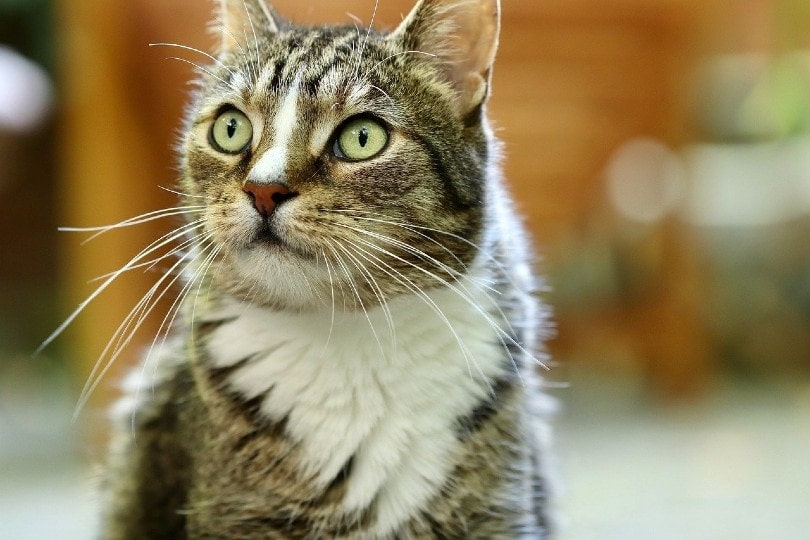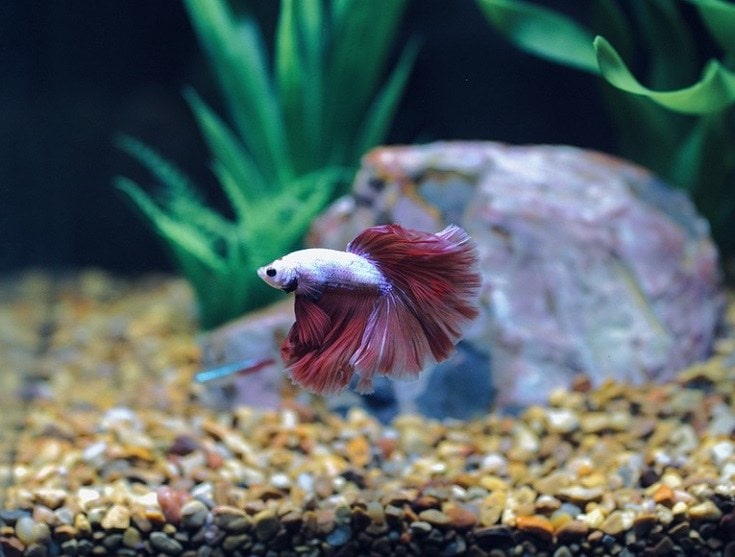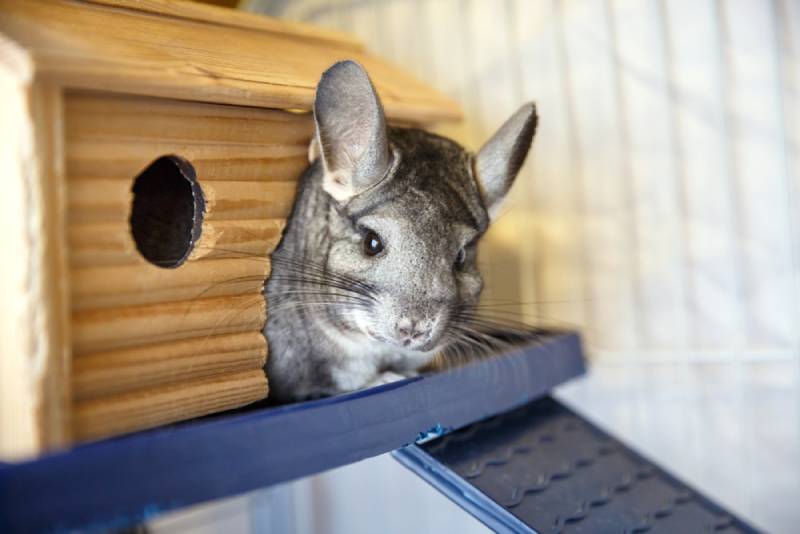VET APPROVED

The information is current and up-to-date in accordance with the latest veterinarian research.
Learn more »The adorable strands of hair on your kitten’s face are not just an aesthetic part of their natural look; whiskers also play an important role for cats. A proper set of whiskers helps your cat navigate the world around them and even protect their eyes from damage due to dirt or dust.
Here are a few more interesting facts about whiskers to demonstrate how useful they are.

The 17 Cat Whisker Facts
1. They Are Thicker Than Hair
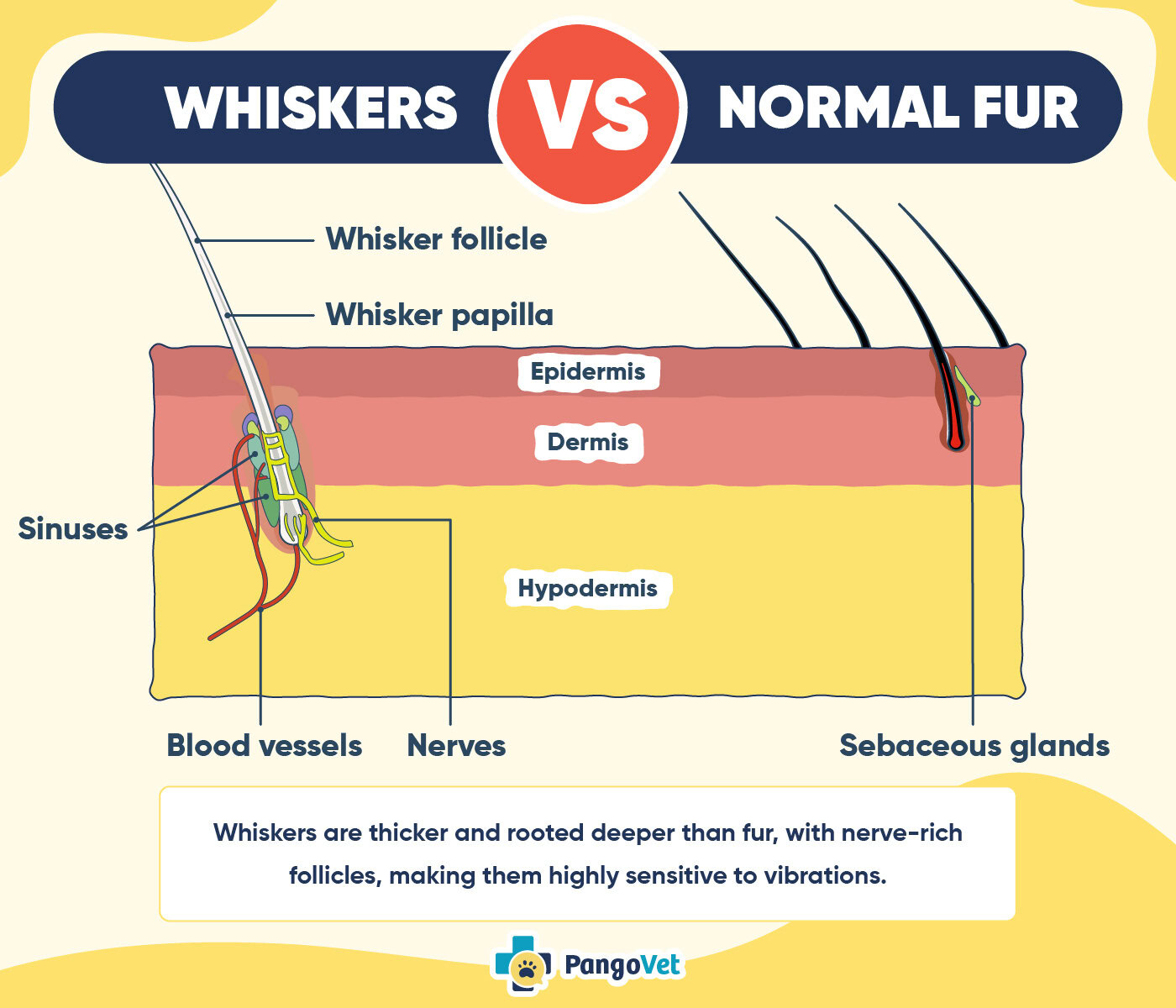
Whiskers are made of keratin, which is the protein in hair, fur, feathers, and nails. However, while regular hair is soft and lustrous, whiskers are thick and coarse. Whiskers grow much deeper in the skin than regular hair follicles and are much stiffer.
The natural thickness and depth in the skin helps make whiskers so helpful when it comes to cats detecting things around them. They also keep their shape while your cat moves around during their adventures or when they’re playing.
2. There’s Always an Even Number
Mystacial whiskers are the long whiskers on your cat’s cheeks. Usually, cats have 24 spread out symmetrically, so 12 on each side of their face. Some cats have more than the average 24 mystacial whiskers, but if you pay close attention, you’ll notice that there’s always an even number.
Having a symmetrical set of whiskers helps your cat accurately assess their surroundings.
3. They’re Highly Sensitive
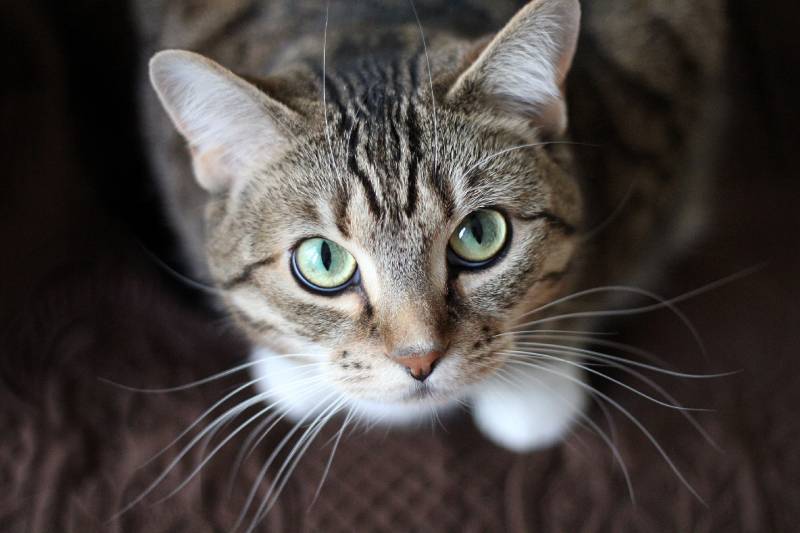
4. They’re Used for Balance
It’s difficult to say precisely why cats are so good at always landing on their feet, but their whiskers help. The proprioceptors at the end of each whisker don’t just pick up vibrations and other information about the surrounding world, but they also detect how your cat is moving.
When your cat falls, the sensors in their whiskers send a message to their brain, which provides information on how to move to prevent an injury. While it’s not the only reason that they always land on their feet, by knowing exactly where each part of their body is, a cat can twist in the air to land on all four paws.
5. They’re Protection
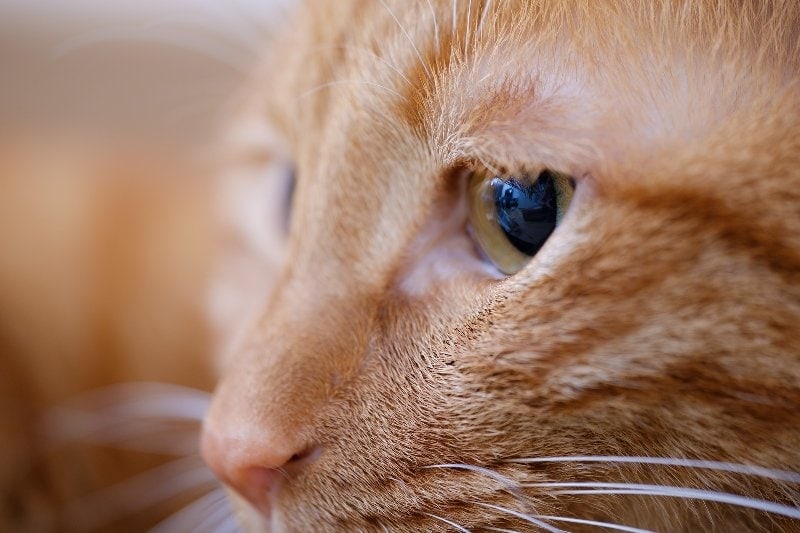
Cats have many whiskers to protect their face and eyes from harm. Their whiskers’ sensitivity helps detect obstacles and tells the cat whenever something comes too close to their face. Dirt, dust, or even another cat’s paw during a fight are all harmful to your cat’s eyes.
When the whiskers pick up movement, they trigger a physical response in your cat. Your cat will close their eyes or even move away to protect their face from whatever threat their whiskers alerted them to.
6. Cats Can Suffer From Whisker Stress
The high sensitivity of whiskers helps cats with many things, but it has a downside. Cats receive so much information from their whiskers that they can suffer from whisker stress or whisker fatigue. This occurs when their whiskers send continuous signals to the brain that turn into information overload, which can be uncomfortable for your cat to experience.
One reason many cat owners use flat feeding bowls is to prevent whisker stress. Although there are no studies to back up this claim, many cats seem to prefer wide, shallow bowls over deeper-sided ones.
7. Whiskers Are Used to Judge Spaces

Cats are renowned for their ability to squeeze through spaces that are smaller than they are. Whiskers are the perfect length for your cat to determine how much space they have to fit through a gap.
While we’d squeeze through a tight gap and get stuck, your cat knows instinctively whether they will fit. Your cat won’t try to squeeze through if their whiskers tell them they won’t fit.
8. Cats Use Them to Show Expressions
While a human might stroke their beard or twirl the end of their mustache around a finger as they think, they can’t control the movement of their facial hair. Cats, however, can. The movement of a cat’s whiskers is essential to their body language and can help you determine how your feline is feeling.
If your cat is relaxed, their whiskers will be too, but an alert kitten will have constantly twitching whiskers. Happy cats raise the whiskers above their eyes for a cute, wide-eyed look. Whiskers can also be flared to make your cat look bigger and more threatening if they feel unsafe.
9. The Latin Name for Whisker Is “Vibrissa”
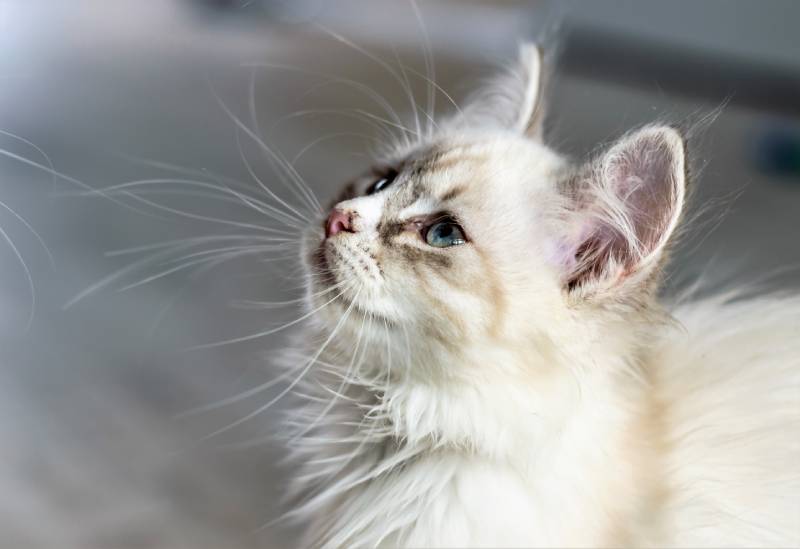
The scientific word for whisker is “vibrissa,” and whiskers is “vibrissae,” which comes from the Latin word “vibrio,” which means to vibrate. The name makes perfect sense when you consider how well whiskers pick up vibrations in the air.
10. Cats Have Whiskers on Their Legs
The whiskers on a cat’s face are conspicuous: They’re on their cheeks, above their eyes, and on their chins. But not many people realize that cats also have whiskers on their front legs.
Carpal whiskers aren’t as expressive as the face whiskers, but they have an essential purpose when it comes to hunting. They help your cat climb and sense if the prey is trying to brush past their leg to escape.
11. Whiskers Help During Hunts
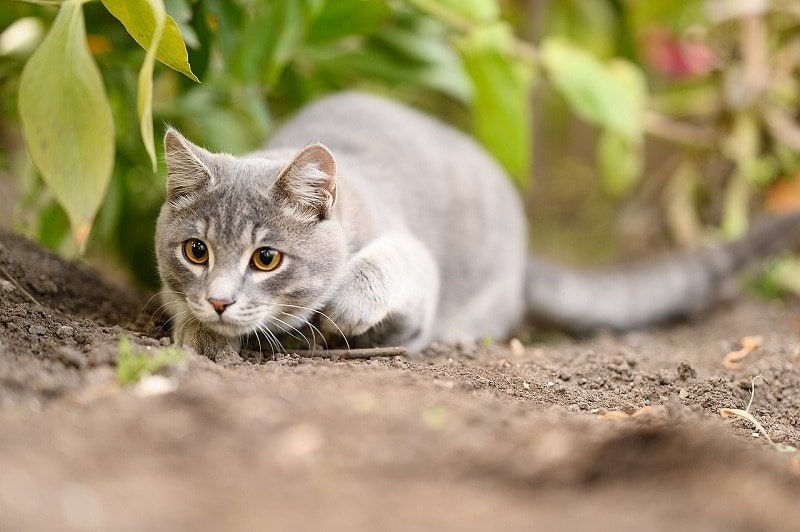
While their claws, teeth, hearing, and sense of smell are all essential aspects of what makes cats such excellent hunters, people forget that whiskers have a function too. Due to their sensitivity, whiskers are incredibly useful for detecting prey such as birds or mice. Whiskers act like a natural radar system to enhance your cat’s hunting skills.
However, locating prey isn’t the only function that whiskers perform during a hunt. The sensitivity to vibrations can also alert your cat to the presence of predators that might harm them.
12. They Help Cats “See” Close Objects
For all their prowess when it comes to hunting, especially with their sense of smell and hearing, cats can’t see well up close. While they can see in limited lighting and have a broad field of view, they need to be about 20 feet away from an object to see it clearly. Seeing anything right in front of their nose or less than a foot away is difficult.
The mystacial whiskers on your cat’s cheeks pick up the change in air currents and act like a ship’s radar for obstacles when the objects are too close for the cat to see properly.
13. Whiskers Are Night-Vision Aids
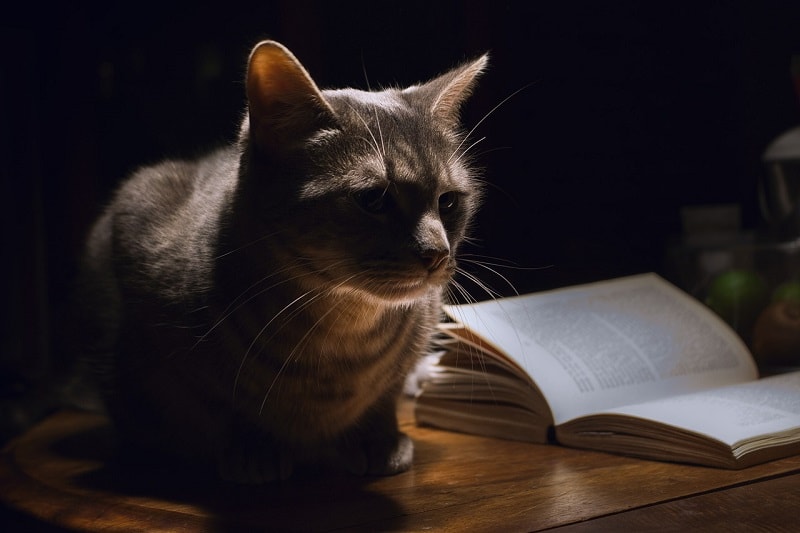
Besides helping your cat feel objects that are close to them, whiskers help in the dark. They sense vibrations in the air and pick up obstacles in the way. While a cat is much more adept at seeing in limited lighting than we are, the extra information given to their brain by their whiskers further aids their ability to navigate.
If you’ve ever wondered why your cat is so good at navigating in the dark, it’s partly due to their whiskers. They stop your cat from bumping into walls, help them find their water dish, and even locate their favorite jingle ball.
14. They Shed and Grow Back
Despite being thicker and stiffer than normal hair, whiskers grow, shed, and grow back just like the rest of your cat’s fur. It’s a normal part of the whiskers’ lifecycle, which is why they don’t need trimming or cutting.
In fact, it’s a bad idea to trim your cat’s whiskers, as it can interfere with how they perceive the world around them. Even if your cat’s whiskers break or are damaged during your cat’s adventures, it’s best to leave them alone and resist the urge to trim or pluck them. They’ll be shed and grow back as good as new.
15. Kittens Are Born With Whiskers

It’s not just adult cats that benefit from whiskers; kittens have them, too. Cats are born with all of their whiskers. Since their eyes and ear canals are closed and the kittens are blind and deaf for the first 1 to 2 weeks after birth, their whiskers are how they “see” the world around them.
For the first few weeks of their lives, kittens learn how to interact with their littermates, their mother, and the surrounding world by using their whiskers and other senses.
16. Mother Cats Sometimes Chew Their Kittens’ Whiskers
As odd as it might sound, mother cats have been known to chew off their kitten’s whiskers. Although it can be alarming behavior if you catch her doing it, it’s not uncommon. Mother cats sometimes chew off their kitten’s whiskers to encourage them to stay close rather than wander around, especially if they’re too young to stray far.
It might also be her way of keeping her kittens clean or due to excessive grooming. The litter mates will sometimes chew each other’s whiskers, too. It’s part of how they learn to interact with each other.
17. Whisker Size Depends on the Cat
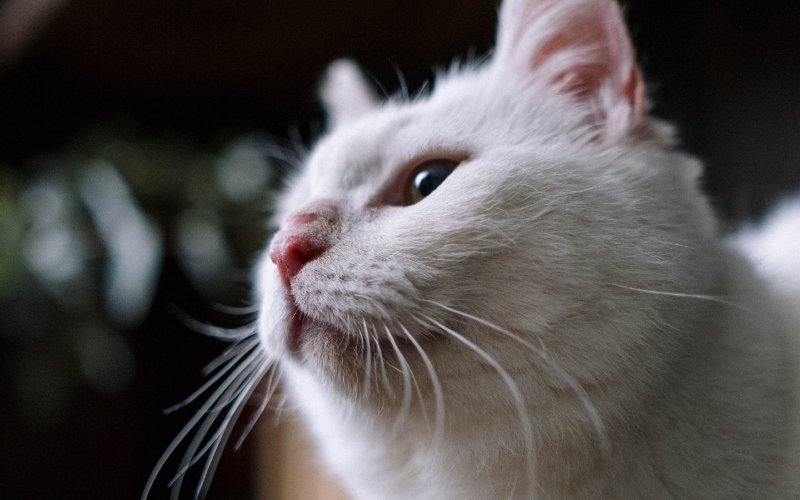
Whiskers might be something that most cats have, but they’re not the same for all of them. Depending on your cat’s age, breed, and size, they can vary in number, length, and style. For example, small cats usually have much shorter whiskers than large cats.
While whiskers are best known for being straight with a gentle curve, they can also be curly, though it’s not as common. Genetics or age can make whiskers naturally curled. Age can also affect the length; for example, kittens have shorter whiskers than adults.

Conclusion
When it comes to your cat’s senses, whiskers are an essential part of their body. While they might look like simple strands of hair, whiskers help your cat navigate the world around them. They’re highly sensitive and can detect vibrations in the air. Like regular hair, they shed and grow back, and it’s not recommended that you trim or pluck them.
Featured Image Credit: Annette Meyer, Pixabay
Contents
- The 17 Cat Whisker Facts
- 1. They Are Thicker Than Hair
- 2. There’s Always an Even Number
- 3. They’re Highly Sensitive
- 4. They’re Used for Balance
- 5. They’re Protection
- 6. Cats Can Suffer From Whisker Stress
- 7. Whiskers Are Used to Judge Spaces
- 8. Cats Use Them to Show Expressions
- 9. The Latin Name for Whisker Is “Vibrissa”
- 10. Cats Have Whiskers on Their Legs
- 11. Whiskers Help During Hunts
- 12. They Help Cats “See” Close Objects
- 13. Whiskers Are Night-Vision Aids
- 14. They Shed and Grow Back
- 15. Kittens Are Born With Whiskers
- 16. Mother Cats Sometimes Chew Their Kittens’ Whiskers
- 17. Whisker Size Depends on the Cat
- Conclusion
